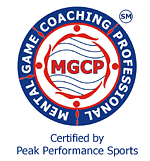Wedges Are Critical to Your Scoring Ability
Get Custom Fitted and Reap the Benefits!
Next to the putter, golf wedges are the most efficient weapons to improve your short game. Golfers can reduce their handicaps significantly by being fit for course conditions and having the right clubs in the bag.
Choosing your wedges in 2024
It’s estimated that 75% of shots during a round are played within 100 feet of the pin. As a consequence, over the past decade, wedges have become increasingly sophisticated, and dexterity with these instruments will certainly both lower your score and add to your enjoyment of the game.
Many golfers, including pros, now carry 2 to 4 wedges in their bag, yet what sets them apart is their mastery, through practice. The pros spend hours every day honing their skills with their wedges. The key for them is knowing their distances with each wedge.
Grooves in irons channel moisture and grass away from the club surface, thereby allowing for better, cleaner contact with the golf ball much like treads on a tire.
Grooves are either of the U- groove, Square -groove or V- groove nature. Larger grooves allow for more spin and limiting the size of grooves is now the law.
Particular grinds, like a C grind, are becoming increasingly popular with short-game artistes. This is where the heel and toe are ground down on the trailing side of the sole. This allows the sole and leading edge to lay flat on shots where the face needs opening, while still providing bounce relief on full shots. In actuality, these wedges can give the best of both worlds to golfers of all levels.
Remember that for softer or fluffier sand shots, these generally require more bounce in a sand wedge. Likewise, players with steeper swing planes will need more bounce. For tight lies use less bounce.
Gap Wedges
Gap wedges were designed to fill the gap that exists between your pitching and sand wedge. A gap wedge allows you more opportunity to play full shots when you are faced with those difficult in-between distances.
Today’s pitching wedges have lofts from 44° to 48° and sand wedges from 54° to 58°. That’s a difference of around 10. The loft differential between a standard nine iron and pitching wedge is 4, so the gap between a pitching wedge and a sand wedge is almost 2.5 club lengths.
One is therefore forced to choke down on the wedge shots much of the time, and we all know that 3/4 shots are much tougher to play than full shots.
Gap wedges generally have 51° or 52° degrees of loft, which places them nicely in the middle. Most of the premium manufacturers produce gap wedges that match their sets. There are also specific niche wedge companies that specialize in custom wedges in all lofts, such as SIC Golf, Bettinardi Golf, Eidolon Golf, SCORE Golf, Edel Golf, Homa and Protoconcept, the latter two being the most highly regarded wedge manufacturers..
Gap wedges have “bounce”, but the measurement or degree of bounce isn’t that relevant because gap wedges are mainly used for full shots. Bounce is where the trailing edge of the wedge sits below the leading edge at the address position.
If possible, look for a gap wedge with a similar face profile and shaft weight to your existing wedges.
Sand Wedges
Sand wedges are designed to slice through bunker sand and can also be used for approach shots and chipping around the greens.
They too have “bounce” which allows the club head to slide smoothly through the sand without digging.
Sand wedges are available in different “degrees’ of bounce:
Low handicaps – may prefer a little less bounce (around 8). This enables a low handicapper to judge shots more accurately from all sand conditions. However, it requires more skill to benefit from the low bounce – you must be able to hit the selected spot behind the ball with good precision, especially in softer sand where the sole will not slide that easily.
Honma TW757 T//World W5 Copper Wedge – Best in Class
After the putter, wedges are the next most important clubs in a player’s bag and the most difficult to fit properly. Most fitters do not have a clue how wedges work and all but a few amateurs know what their wedges should look like with regard to bounce and grind.
Honma was created to bring this knowledge and expertise to all golfers and to make wedges that fit the golfer’s swing, not fit the swing to the club that they have purchased. Few manufacturers have the same honored history as Honma.
Even among golfers who know what’s what when it comes to their gear, the name ‘Honma’ brings with it a level of mystique that few brands can claim.
Fitting for Honma products is available at retailers throughout the US.
For a list of fitters in your area, email Honma support at support@honmagolf.com.
It doesn’t happen by accident; over many years, Honma has ear
ned its excellent reputation. And the 20th and 21st centuries have been kind to it. It was able to capitalize on the strong demand for high-quality golf clubs that exists today and also benefit from a good strategy. Honma clubs in Europe are out of stock right now, due to high demand. Only those who place orders can take delivery because their clubs aren’t manufactured as is – they’re made specifically for each individual buyer in Japan!
One key aspect of Honma’s strategy is maintaining total quality control. More than 100 Takumi master craftsmen (defined as one who has worked on Honma clubs or shafts for 20 to 30 years) are employed in the creation of the wedges, providing a level of personal attention to detail not found in mass-produced clubs.
From personal experience, my wedge play using my Honma TW-W wedges, has improved dramatically. What I really like is the way the wedge feels, sets up, and the confidence I feel over each shot. The buttery feel and dart-like accuracy is a beautiful thing to experience!
The most important characteristic of any wedge is its bounce. Bounce determines where the club will impact the ball. The player’s swing and how they deliver the club to the turf determines how much bounce
they need. Every player, regardless of skill, delivers the club differently to the turf, and therefore, in order to have the wedge perform properly, requires that the bounce be correct in order to execute the shot they are trying to hit. The grind of sole of the wedge works in concert with the bounce to give the player the best chance to hit the desired shot. With these Honma TW-W wedges you can feel the bounce, whereas the mass manufactured wedges, not so.
In a nutshell, the USP (Unique Selling Proposition) of the TW wedges are:
- Slightly Larger Head: Enjoy added forgiveness with a widened sweet spot.
- Double Milling Face & Bite Rib Line: Improved spin and control, thanks to the innovative milling pattern on the face and the protrusion-shaped rib between the score lines.
- Copper finish to improve feel, reduce glare, and prevent rust.
I-Sole, C-Sole, and S-Sole GRIND OPTIONS for Honma TW-W wedges
Three specific sole grinds optimize turf interaction. I-Sole (48°, 50°, 52°, and 54°) embodies slight trailing edge relief across the back for full sole performance with improved turf release on takeaway and impact. C-Sole (56°, 58°, and 60°) features an aggressive heel and toe trailing edge relief with a flat bounce surface for shot making versatility around the green. S-Sole (56°, 58°, and 60°) features a wide sole with four-way relief for forgiveness in various conditions. FYI, the lie angle for all wedges is 63.5°. I-Sole length is 35.25”. Both C-Sole and S-sole’s length is 35”.
Fitting someone for a wedge requires that the fitter take into account how the player swings (are they a picker or a digger?), how much toe and heel relief do they need in order to get the club to the ball, what kind of sole grind will best facilitate this, and what lie does the club need to be to get the ball closest to the sweet spot of the wedge face. The next important aspect that a fitter should deal with is how to fit a wedge for a player that will instill the most confidence. The wedge should feel and sound good to the player.
The proper swing weight and choice of metals (forged versus cast) help instill this confidence. Next, the wedge should be pleasant to the eye. This means the offset, overall shape, and shape of the leading edge must fit the player’s eye.
The best way for you to get the right wedge is to understand the course conditions you will b
e playing on the majority of the time. Most retailers have a 30 to 90 day return policy, so take advantage of playing these different wedges to find which works best for your game.
In reality, you may need two complete wedge sets, especially if you play desert golf (Palm Springs or Phoenix) in the winter and city golf in the summer (San Diego or Chicago). Kikuyu versus Bent grass necessitates a particular wedge for each of these surfaces.
Shafts are crucial to a wedge’s performance. Wedges require the proper engine i.e. the shaft and when the proper shaft is matched with the proper grind, the result is unparalleled. Honma’s VIZARD IB Wedge Shaft or Honma’s NSPRO 950 Neo shafts are highly recommended. They have been engineered precisely for Honma’s equipment.
Your fitter will work with you to determine the right shaft for your wedge expectations.
Lastly, to know how to use your wedges and determine your exact distances with each wedge, take a wedge lesson with your PGTAA local pro.
$229.00 https://us.honmagolf.com/products/tworld-w5-copper-wedge

